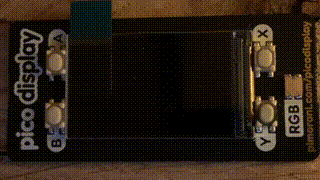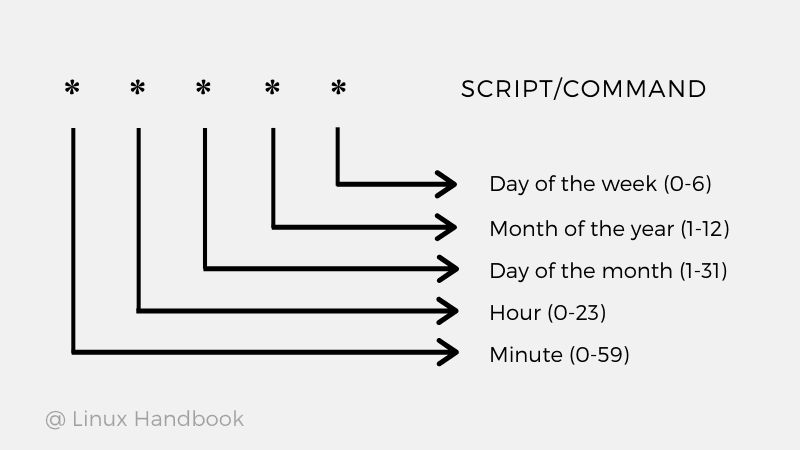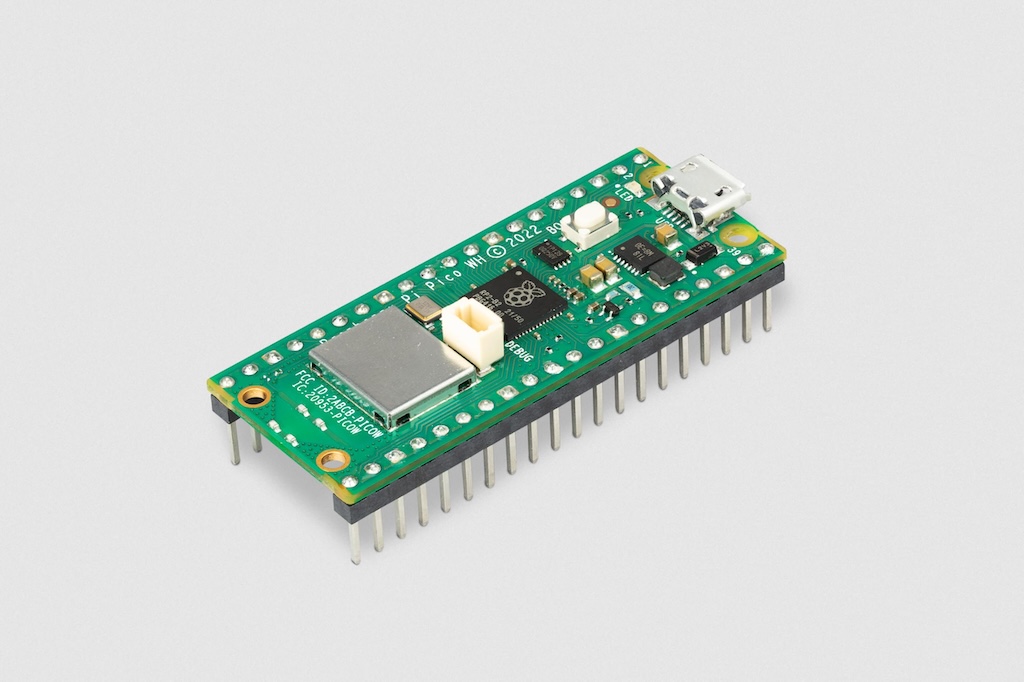Overhead Flight Display
Build your own real-time information display!

Do more with your data
Know what is flying above you!
Now that you have your own ADS-B receiver, and you’re running ADS-B Radar on your Mac, perhaps it would be great to know what airplane is currently overhead when you’re getting a coffee 🙂 The Raspberry Pico WH and the Pico 1.14" IPS LCD screen from Pimoroni come to the rescue. Although the display is small, it has a low power consumption and you can easily place it somewhere.
What will you need:
| Pico WH (WiFi version with header) | 10 USD |
| Pimoroni Pico Display Pack unit | 20 USD |
Use the adsbdb.com public API
This API offers data on aircraft, airlines, and flight routes
On the Raspberry Pi which is processing the ADS-B data and runs dump1090-fa, we create a little shell script which will run every two minutes once we’re ready. In this case we created a directory 'pi' under the home directory where we create the file “overhead.sh” :
nano overhead.sh
#!/bin/bash
python3 /home/pi/overhead.py
chmod 777 /tmp/overhead.json
Now we create the main Python script in the same directory to process the JSON file from adsbdb.com, edit url/lathome/lonhome to match your installation and name this file “overhead.py”:
nano overhead.py
#!/usr/bin/env python3
#!/usr/bin/env python3
# Find closest airplane flying overhead
# (c) JF Nutbroek
# 08/10/2023
from urllib.request import urlopen
from datetime import datetime
from datetime import timezone
import math
import json
# User defined
url = "http://localhost/dump1090/data/aircraft.json"
lathome = 45.9 # Position ADS-B receiver
lonhome = 6.3 # Position ADS-B receiver
### Start
# Haversine formula example in Python
# Author: Wayne Dyck
def distance(origin, destination):
lat1, lon1 = origin
lat2, lon2 = destination
radius = 6371 # km earth radius
dlat = math.radians(lat2-lat1)
dlon = math.radians(lon2-lon1)
a = math.sin(dlat/2) * math.sin(dlat/2) + math.cos(math.radians(lat1)) \
* math.cos(math.radians(lat2)) * math.sin(dlon/2) * math.sin(dlon/2)
c = 2 * math.atan2(math.sqrt(a), math.sqrt(1-a))
d = radius * c
return d
# Find flights
def find_adsbdb(flightid, hex):
try:
if hex == "":
response = urlopen("https://api.adsbdb.com/v0/callsign/" + flightid)
else:
response = urlopen("https://api.adsbdb.com/v0/aircraft/" + hex + "?callsign=" + flightid)
data_json = json.loads(response.read())
aircraft = data_json['response']
if flightid in aircraft['flightroute']['callsign_icao']:
return flightid, aircraft
else:
return None, None
except:
return None, None
# Write JSON for Pico W
def writeresult(flightdict):
json_object = json.dumps(flightdict)
with open("/tmp/overhead.json", "w", encoding="utf-8") as outfile:
outfile.write(json_object)
### Find the closest airplane
aircraft = []
try:
response = urlopen(url)
data_json = json.loads(response.read())
aircraft = data_json['aircraft']
except:
exit()
closest = 1000 # km distance of closest plane
closestflight = '' # Will hold flight number
dictionary = {"flight":"none"} # Empty dictionary
speed = 0
vert_rate = 0
altitude = 0
compass = ["N","NNE","NE","ENE","E","ESE","SE","SSE","S","SSW","SW","WSW","W","WNW","NW","NNW","N"]
track = 0
heading = ""
newflight = True
hex = ""
for airplane in aircraft:
if 'lat' in airplane:
if 'lon' in airplane:
if 'flight' in airplane:
if 'altitude' in airplane:
altitude = int(airplane['altitude'])
if 'hex' in airplane:
hex = airplane['hex']
if 'vert_rate' in airplane:
vert_rate = int(airplane['vert_rate'])
if 'speed' in airplane:
speed = int(airplane['speed'])
if 'track' in airplane:
track = int(airplane['track'])
heading = str(track) + " degrees " + compass[min(round((track % 360) / 22.5), 16)]
flightdis = distance((lathome, lonhome), (airplane['lat'], airplane['lon']))
flighthgt = altitude * 0.0003048
dis = math.floor(math.sqrt(flightdis**2 + flighthgt**2))
if dis < closest:
closest = dis
closestflight = airplane['flight'].replace(" ", "").upper()
if closestflight != '':
#print(closestflight)
#print(hex)
flight, details = find_adsbdb(closestflight, hex)
if flight != None:
dictionary = {
"flight": flight,
"airline": details["flightroute"]["airline"]["name"],
"altitude": str(altitude),
"vert_rate": str(vert_rate),
"speed": str(speed),
"origin_iata": details["flightroute"]["origin"]["iata_code"],
"destination_iata": details["flightroute"]["destination"]["iata_code"],
"model": details["aircraft"]["type"],
"origin": details["flightroute"]["origin"]["name"],
"destination": details["flightroute"]["destination"]["name"],
"departure": "",
"eta": "",
"distance": str(closest),
"track": heading
}
writeresult(dictionary)
else:
writeresult(dictionary)
else:
writeresult(dictionary)
Create a crontab
Refresh the data every 2 minutes
Create a 1 or 2 minute crontab to refresh the overhead flight information (note: there is a limit on the amount of requests you can send, a 1 or 2 minute interval should keep you below it):
nano /etc/crontab
*/2 * * * * root sh /home/pi/overhead.sh
We need to make the JSON file we created with our script accessible for the Pico W to download:
cd /var/www/html/
sudo ln -s /tmp/overhead.json overhead.json
Prepare the Pico
Asssemble & Configure the Pico
To prepare the Pico you can press the display on the header, do it gently and make sure the USB side is indeed on the USB side of the Pico. Now we can connect the Pico W with Display and with an official USB Pico cable (most cables will not work!) to your Mac. Install Thonny for macOS and you will be able to connect to the Pico. Download & install the Pimoroni custom MicroPython (version v1.20.6 was used in this example) for the "Pico W" version (keep the boot select button pressed and then plug it into the Mac) - copy the file over and unplug & replug the Pico in the Mac. Then use Thonny to create two files on the Pico. The first one is named "secrets.py" and will hold your WiFi networks name and password:
SSID = "Your Wi-Fi Network"
PASS = "Your Password"
The next file on the Pico should be named "main.py" and will run every time the Pico has power and boots up. Edit the url to point to your ADS-B Raspberry Pi that runs the cron job, in this case we used: "http://192.168.68.120/overhead.json"
# (c) JF Nutbroek
# 08/10/2023
from picographics import PicoGraphics, DISPLAY_PICO_DISPLAY
from pimoroni import RGBLED
import network
import secrets
import urequests
from time import sleep
from math import floor, pi, sin, cos
from machine import Timer, WDT
# User defined input
# URL to local json file using http
url = "http://192.168.68.120/overhead.json"
pollinterval = 10 # Interval in seconds for a new JSON poll
brightness = 0.5 # Brightness of the display
sleepafter = 10 # Number of JSON polls without aircraft
# ********* Start
display = PicoGraphics(display=DISPLAY_PICO_DISPLAY, rotate=0)
display.set_font("bitmap8")
display.set_backlight(brightness)
# Colors
BLACK = display.create_pen(0, 0, 0)
GREEN = display.create_pen(50, 205, 50)
RED = display.create_pen(200, 0, 0)
BLUE = display.create_pen(0, 191, 255)
WHITE = display.create_pen(255, 255, 255)
ORANGE = display.create_pen(255, 140, 0)
YELLOW = display.create_pen(255, 255, 0)
# Switch LED off
led = RGBLED(6, 7, 8)
led.set_rgb(0, 0, 0)
# Overhead info
flightinfo = {"flight":"none"}
flight = ""
airline = ""
altitude = ""
vert_rate = ""
speed = ""
origin_iata = ""
destination_iata = ""
model = ""
origin = ""
destination = ""
departure = ""
eta = ""
distradar = ""
heading = ""
xpos = 20
textpos = 0
infopos = 0
timedout = 0
# Write text centered or right aligned
def writetext(text, y, center, size, color):
width = display.measure_text(text, size)
display.set_pen(color)
if center:
display.text(text, floor((240 - width) / 2), y, 300, size)
else:
display.text(text, 240 - width, y, 240, size)
def radar(steps, rounds, message):
for _ in range(rounds):
for n in range(0, steps):
display.set_pen(BLACK)
display.clear()
for y in range(60, 0, -10):
display.set_pen(GREEN)
display.circle(120, 68, y)
display.set_pen(BLACK)
display.circle(120, 68, y - 3)
x1 = 120 + (cos(2 * pi * (n / steps)) * 65)
y1 = 68 + (sin(2 * pi * (n / steps)) * 65)
display.line(120, 68, int(x1), int(y1), 5)
if message != "":
display.set_pen(WHITE)
display.text(message, 0, 0, 240, 2)
display.update()
# Read JSON
def readjson():
global flightinfo, timedout
flightinfo = {"flight":"none"}
led.set_rgb(138, 43, 226)
try:
if wlan.isconnected():
flightinfo = urequests.get(url).json()
led.set_rgb(0, 0, 0)
else:
led.set_rgb(255, 0, 0)
radar(180, 1)
except:
led.set_rgb(255, 0, 0)
if 'flight' in flightinfo:
if flightinfo['flight'] == "none":
timedout += 1
else:
timedout = 0
def resetwdTimer(wdTimer):
global wd
wd.feed()
# Read JSON
def update_display(myTimer):
if timedout < sleepafter:
readjson()
# Startup
radar(180, 1, "v1.1")
# Connect to WiFi
wlan = network.WLAN(network.STA_IF)
wlan.active(True)
wlan.connect(secrets.SSID, secrets.PASS)
sleep(1)
# First JSON download
if wlan.isconnected():
readjson()
else:
radar(180, 5, "No WiFi")
readjson()
# Start the timers
myTimer = Timer()
myTimer.init(period = pollinterval * 1000, mode = Timer.PERIODIC, callback = update_display)
wdTimer = Timer()
wdTimer.init(period = 5000, mode = Timer.PERIODIC, callback = resetwdTimer)
# Automatic reboot after 6 seconds of inactivity
wd = WDT(timeout = 6000)
while True:
# Sleep Mode when no new data is received
if timedout == sleepafter:
display.set_pen(BLACK)
display.clear()
display.update()
display.set_backlight(0.0)
if timedout >= sleepafter:
sleep(pollinterval * 10)
readjson()
if timedout == 0:
display.set_backlight(brightness)
else:
continue
# Start drawing
display.set_pen(BLACK)
display.clear()
if 'flight' in flightinfo:
flight = flightinfo['flight']
if flight == "none":
radar(180, 4, "Nothing")
continue
if 'airline' in flightinfo:
airline = flightinfo['airline']
if 'altitude' in flightinfo:
altitude = flightinfo['altitude']
if 'vert_rate' in flightinfo:
vert_rate = flightinfo['vert_rate']
if 'speed' in flightinfo:
speed = flightinfo['speed']
if 'origin_iata' in flightinfo:
origin_iata = flightinfo['origin_iata']
if 'destination_iata' in flightinfo:
destination_iata = flightinfo['destination_iata']
if 'model' in flightinfo:
model = flightinfo['model']
if 'origin' in flightinfo:
origin = flightinfo['origin']
if 'destination' in flightinfo:
destination = flightinfo['destination']
if 'departure' in flightinfo:
departure = flightinfo['departure']
if 'eta' in flightinfo:
eta = flightinfo['eta']
if 'distance' in flightinfo:
distradar = flightinfo['distance']
if 'track' in flightinfo:
heading = flightinfo['track']
# Show main flight info
display.set_pen(YELLOW)
display.text(origin_iata, 0, 0, 240, 3)
writetext(destination_iata, 0, False, 3, YELLOW)
display.set_pen(ORANGE)
display.text(departure, 0, 48, 240, 2)
writetext(eta, 48, False, 2, ORANGE)
if flight != "N/A":
writetext(flight, 0, True, 3, ORANGE)
# Draw animation
if xpos < 220:
xpos += 1
else:
xpos = 20
display.set_pen(BLUE)
display.line(20, 35, xpos, 35, 2)
display.circle(25, 35, 8)
if xpos > 210:
display.set_pen(WHITE)
display.circle(225, 35, 8)
display.set_pen(GREEN)
display.triangle(xpos, 25, xpos, 45, xpos + 10, 35)
# Write airline name - shorten if it is too long
airline_width = display.measure_text(airline, 2)
timing_width = display.measure_text(departure + eta, 2)
if (airline_width + timing_width) > 230:
shorten = airline_width / (230 - timing_width)
stripped = min(12, len(airline) - int(len(airline) * shorten) - 3)
writetext(airline[0:stripped] + "..", 48, True, 2, WHITE)
else:
writetext(airline, 48, True, 2, WHITE)
# Write scrolling text for full airport names
longname = origin + " to " + destination
longwidth = display.measure_text(longname, 2)
display.set_pen(GREEN)
display.text(origin + " -> " + destination, 240 - textpos, 78, 1000, 2)
textpos += 2
if textpos > (longwidth + 240):
textpos = 0
# Write scrolling text for all other details
longinfo = model + ", Altitude " + str(int(int(altitude) * 0.0003048)) + " km, Speed " + str(int(int(speed) * 1.852)) + " kmh, "
if ((int(vert_rate) > -64) and (int(vert_rate) < 64)):
longinfo += "Level Flight, "
elif int(vert_rate) < -64:
longinfo += "Descending, "
else:
longinfo += "Ascending, "
longinfo += distradar + " km distance, " + heading
longinfowidth = display.measure_text(longinfo, 3)
display.set_pen(BLUE)
display.text(longinfo, 240 - infopos, 111, 5000, 3)
infopos += 3
if infopos > (longinfowidth + 240):
infopos = 0
# Update everything to the screen
display.update()
sleep(0.01)
That should be it, now you need to find a place for your new Pico Display with real-time flight info!
Success!